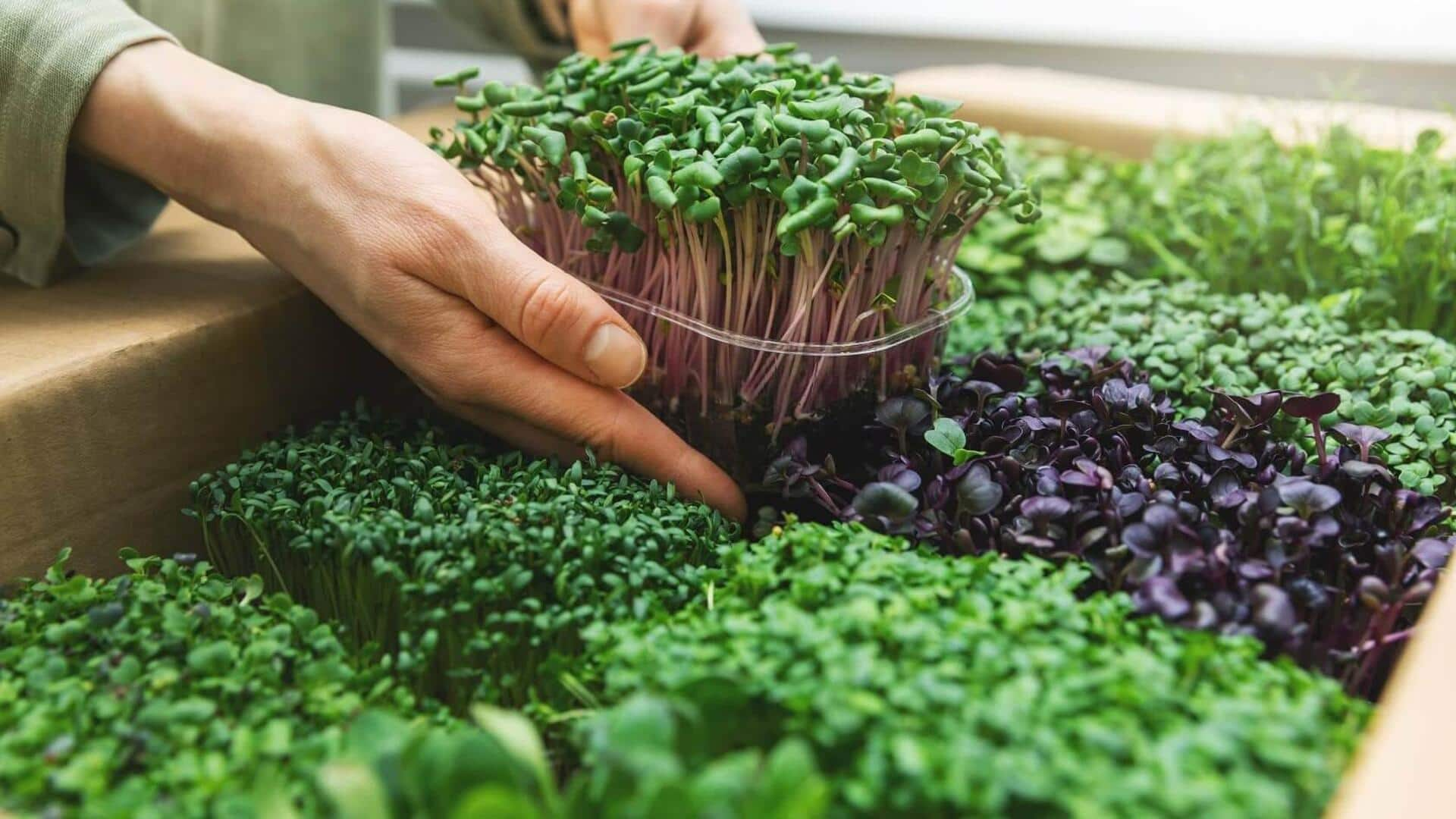
Indoor gardening 101: Tips for growing microgreens
What's the story
Indoor gardening can be a great way to unwind, especially when it comes to growing microgreens. These tiny plants are easy to grow and require little space, making them perfect for beginners. Not only does growing microgreens give you fresh greens to add to your meals, but it also provides a sense of accomplishment and relaxation. Here are some tips to help you get started with indoor gardening.
Tip 1
Choosing the right seeds
Selecting the right seeds is critical for successful microgreen cultivation. Go for seeds that are specifically labeled as suitable for microgreens. Popular options include sunflower, radish, and broccoli seeds. Make sure the seeds are organic and non-GMO for best results. This ensures that your microgreens are not only healthy but also flavorful.
Tip 2
Preparing your growing medium
A good growing medium is important for healthy microgreens. Use a shallow tray with drainage holes and fill it with about one inch of quality potting soil or coconut coir. Make sure the medium is moist but not soggy before sowing your seeds. This will give your plants the right environment to germinate and grow.
Tip 3
Proper lighting techniques
Lighting is key to growing healthy microgreens indoors. Place your trays near a south-facing window where they can get plenty of natural light every day. If natural light is insufficient, consider using LED grow lights positioned about 12 inches above the plants for around 12 hours a day.
Tip 4
Watering and maintenance tips
Regular watering is key to keeping your microgreens healthy. Use a spray bottle or misting system to keep the soil moist but not waterlogged. Check daily for moisture levels and adjust accordingly based on environmental conditions like humidity and temperature.
Tip 5
Harvesting at the right time
Knowing when to harvest is key to getting the best flavors from your microgreens. Most varieties are ready within seven to 21 days after sowing, when they reach about two inches in height with fully developed cotyledons (seed leaves). Use clean scissors or shears to cut just above soil level, ensuring minimal disruption to future crops if you plan on successive plantings.